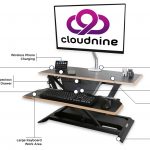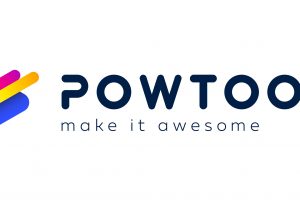Imagine yourself as a ship captain. You have a team of great specialists, and your task is to lead them. Each member of your team knows how to do their job, but without collaboration, you won’t reach the destination. So, as a captain, you need to specify the direction, allocate tasks, manage them and be aware of each and every team’s action, which can’t be easy.
The manager runs a project as the captain runs a ship. They oversee product development and coordinate their team’s movement to success. Each team member makes a valuable contribution to the workflow, but the product development pace is set by the manager. Every development project requires a lot of control over processes. Since members of the team focus on their own tasks, they can’t see the big picture and make the right decision. That’s why there must be someone who will watch over the workflow, reorganize resources correctly and make sure the final product will be successful.
It doesn’t sound like an easy job, does it? But what exactly does the product manager do? And which tools can simplify this job and streamline the workflow of the whole team? Let’s figure out all the details.
Who are product managers? And what do they do?
The primary task of any product manager is to ensure the success of the final product. This goal is rather hard to achieve. The manager should not only keep the team efficient but also do analytics, predict possible events and make data-based decisions. It is a complicated job that imposes many responsibilities on the manager.
Market trends and customer demands analysis
The worst thing that could happen is a product that took the team a lot of effort, time and money, but which is of no use to customers. This happens more often than you might think. Teams come up with ideas that seem great and start working on them without checking if the target audience needs this solution in the first place.
That’s why the product manager has to be the one in charge. They will have to run the research, understand the current market trends, and check what customers demand at the moment. Then, the manager can decide whether the team should develop the product or not.
Defining a product development strategy and phases
Each project should be based on a particular strategy and divided into certain stages. Then, it will be easier for the team to solve complex tasks, and for the manager to control the processes. The product manager is the very person who can establish such a strategy because they know the best way to organize the workflow and maintain the resources to end up with a quality and profitable product.
Therefore, once a new project arrives, the product manager has to lay out the development plan and distribute tasks among team members. It is also crucial to break the project into several phases to make it easier to track. Once the phase is over, the product manager can pause the development and check whether everything moves in the right direction.
Decision-making processes
The product manager is the person who should know what’s best for both the company and its customers. Therefore, the manager must be the one who plays the leading role when it comes to making business decisions, including financial matters. They see a full picture and understand what the next move should be.
Marketing campaign ideas
Again, since the product manager is the one who knows the needs of the target audience, they should offer some ideas for marketing campaigns. Of course, the product manager is not a marketing expert, so they shouldn’t lay out a whole promotional plan. But they should at least provide the marketing team with useful insights and valuable thoughts on how to improve the customer interaction with the product and make campaigns work better.
Cross-functional teams management
Even though the main responsibility of the product manager is to control the team of developers, the product manager should be a middleman between all the teams in the company. Therefore, they need to know how to approach different specialists and translate the demands of one team to another. Also, it’s the job of the product manager to ensure all teams understand each other and work together.
Must-use tools for product managers
Thus, professionals should leverage technologies to streamline the work and simplify processes. Fortunately, there are many tools product managers can take advantage of. Here are the five most popular solutions every product manager should use.
Confluence
Confluence will keep the product knowledge base organized and enhance teamwork. With this instrument, it is easy to plan the project and share the structure with the team while assigning all the tasks. Customizable templates are something that boosts creating any required material and makes it possible to add infographics. Therefore, this tool helps you get rid of grunt work and leaves room for creative tasks. Using Confluence, the product manager can track the work of each team member, update everyone on changes, plan meetings, analyze feedback, see product requirements and follow the marketing plan.
Feature list: creating a project knowledge base; adding product documentation/meeting notes/project plans; sharing information with team members; real-time content editing; tracking feedback via inline comments on pages/files.
Jira
It is the most popular tool for issue tracking. Jira allows you to see issue statuses clearly, plan sprints and track the progress of tasks. Since it helps to devote tasks into several phases, team members have no trouble managing them. With this tool, it is much easier to stick to deadlines and create an end item on time. Besides, it significantly increases the chances to deliver a high-quality product and keep improving it after the release. Real-time reports will help the product manager oversee the performance of the team. Moreover, with Jira, it is easy to identify when the task was completed and by whom.
Feature list: organizing the workflow of each team member; tracking current tasks; reporting on the team performance; creating and changing task statuses; analyzing the project’s progress with charts/diagrams.
Requirements Clarity Map
Requirements Clarity Map for Jira gives a visual representation of the product strategy. It enables the manager to map all the requirements of the project and see the connection between them. It helps you understand the importance of each demand and bear in mind all related requirements. As a result, it is easier to build a sustainable and efficient product development strategy, save a lot of time and make the workflow more transparent.
Feature list: structuring product requirements as a tree graph; tracking and comparing requirement changes; linking Confluence pages; adding statuses of Jira issues.
Hubspot tools
Hubspot is an easy-to-use CRM that offers a whole variety of marketing and analytics tools for free. This means you can boost your productivity without losing a penny. It offers a usable space for communication with a convenient way to send direct messages, automated tracking of consumer interaction with your product, and many more functions. There are also paid services that you can leverage to improve the marketing processes and get valuable insights on how to make the product more profitable.
Feature list: creating a marketing strategy; conducting market analysis; tracking customer interaction with the product.
Trello
Collaboration is key to success. Therefore, any product manager should use team interaction tools to achieve better results. With Trello, the team can see the big picture of the product development stages. Moreover, this is a perfect solution for keeping all project notes and details in one place and make them easily accessible by each team member. The Trello interface looks like a board with stickers, so it will be easy to implement this tool in the workflow. The product manager can put different labels on tasks, and team members can replace stickers as the task moves to the next stage.
Feature list: planning tasks with cardboards/to-do lists; creating and assigning tasks; sharing task boards with team members; tracking the project’s progress.
Accurate management is key to product success
Since a product manager is a captain who decides where the ship will go, this job is very demanding. With a poorly organized workflow, the productivity of the whole team declines.
To achieve better results, the product manager can make use of many tools and monitor the development process at each stage. These tools have a number of features, which make communication between members, managing tasks and sticking to timeframes considerably easier. Using dedicated tools the product manager can maintain control over all development processes, gather valuable data, and thus, contribute to the success of the final product.
















